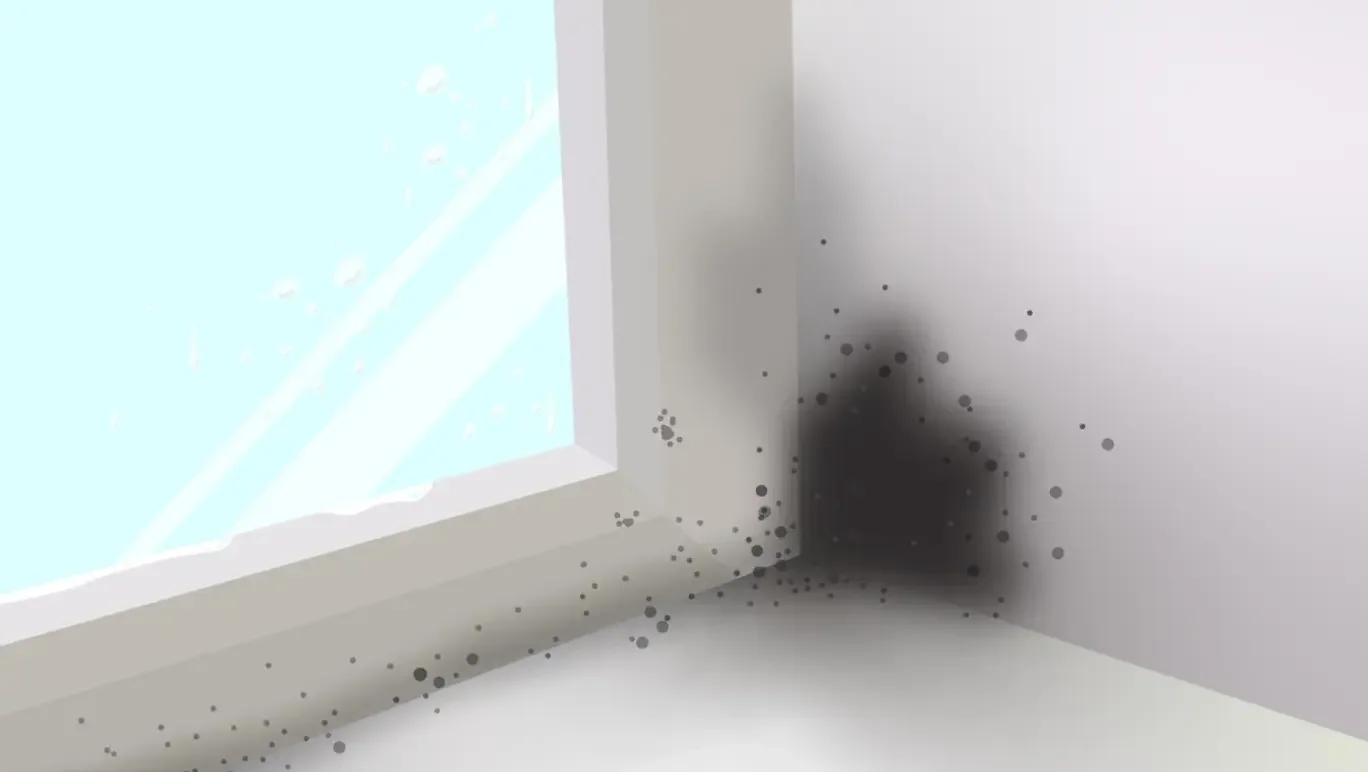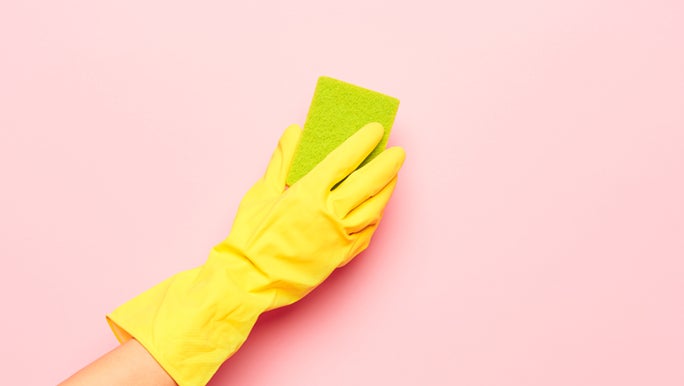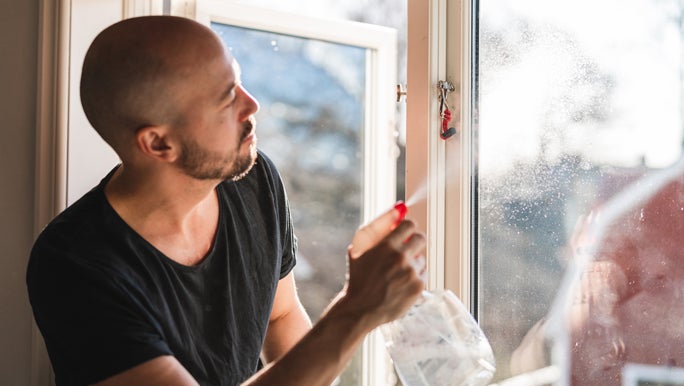Key Points
- Black mould may affect between 10-50% of buildings in Australia.
- Exposure to mould may lead to respiratory symptoms and more in susceptible people.
- However, black mould is preventable, so it’s important to know what to look out for.
You’ve most likely encountered unsightly stains and musty smells in your home from mould. It grows in our showers and loves to hide out undetected in our roof or floor leaks.
A World Health Organization (WHO) report states that 10-50% of Australian buildings experience mould problems. And mould doesn’t just affect our homes. As the Parliament of Australia acknowledges, in some cases, “exposure to mould can have an adverse impact on health.”
Of course, not all mould is bad for us. We can thank it for creating blue cheese, some dessert wines, and breakthrough medicine like penicillin. Tens of thousands of mould species grow naturally in our environment, and most of them don’t cause problems.
But there’s an infamous type that might: black mould.
What is black mould?
Many types of mould species appear black, but the term ‘black mould’ (sometimes known in Australia as toxic mould) refers specifically to Stachybotrys chartarum.
It’s a greenish-black fungus that often grows when moisture is present. Like every type of mould, it occurs naturally outdoors and plays a major role in our ecosystem.
However, when water damage from leaks and floods or condensation occur indoors, black mould can also grow on cellulose-rich building materials, such as:
- wallpaper
- insulation
- plasterboard
- ceiling panels
This makes black mould particularly bothersome for both homeowners and renters.

Black mould around windows
The health impacts of mould
But can black mould cause health problems for Australians? And what are the mould toxicity symptoms to look out for?
Mould releases tiny spores into the air that we then inhale. Occasionally, we might touch mould-affected surfaces or even ingest mouldy food.
The World Health Organization concluded that there’s, “an association between exposure to dampness or mould and conditions such as asthma, allergic alveolitis and mould infections in susceptible individuals.”
GP Dr Jill Gamberg says that people with, “severe asthma, allergies, weakened immune system or chronic lung disease,” are most likely to have reactions to black mould.
Naturopath Jess Milroy adds that the length and degree of your exposure to black mould can affect your symptoms. She explains that, “mould exposure symptoms may begin as respiratory or allergy symptoms”, such as:
- nasal congestion
- red/itchy eyes
- skin irritation
- coughing
- wheezing
- fatigue
However, Jess says that long-term exposure may present in other ways. That’s why it’s always best to seek advice from a health professional (such as your GP) for your specific circumstances.
How to clean black mould
If black mould has shown up as an unwelcome guest in your home, it’s important to clean it safely and promptly. If you decide to clean it yourself, here are some helpful tips:
- First, remove the moisture source: The best way to keep mould from growing in your home is to remove all moisture sources. That means fixing plumbing leaks and condensation, and reducing humidity.
If you constantly clean mould only to find it growing back a week later, you most likely have a moisture issue.
- Protect yourself and your environment: Before you begin cleaning, Jess says to, “put on a mask and gloves to keep your respiratory system safe.” Better Health Victoria also recommends wearing shower caps, eye protection, and suitable footwear and clothing for added safety. Cleaning mould will disturb it, so it’s important to ensure proper ventilation to avoid spreading the spores throughout your home.
- Remove the black mould: Jess recommends avoiding bleach, which many people think is an efficient mould cleaner.
“Bleach only changes the colour of the mould so you can’t see it,” she explains. “The spores are still there.”
Instead, she recommends a solution of 4 parts vinegar to 1 part water and a microfibre cloth to kill black mould effectively. Lightly wipe the solution over all hard surfaces, including walls, ceilings and skirting boards.
You can also use a clove oil solution. Combine a quarter of a teaspoon of clove oil and a litre of water in a spray bottle, apply to the area, leave for 24 hours, then spray again and wipe the mould away.
Then, wash any soft fabrics like clothing, bedding, towels and soft toys in the hottest cycle of your washing machine. Arrange professional cleaning for any soft fabric items that don’t fit in the washing machine.
Finally, dispose of any materials you can’t clean, like paper, cardboard boxes and foam mattresses.

It’s important to clean mould safely and promptly
Tips to prevent black mould in your home
The good news is that preventing mould is possible. Here are Dr Jill’s top tips to reduce mould growth and exposure:
- Control humidity levels.
- Promptly fix leaky roofs, windows and pipes.
- Thoroughly clean and dry your home if it floods.
- Ventilate moist areas, including the shower, laundry and cooking areas.
It’s also common for mould to grow in dark, air-restricted areas. The Queensland Government recommends allowing sunlight into your property as often as possible, as well as leaving room between your furniture for sufficient airflow.

Reduce the moisture levels in your home to prevent mould growth
Keep black mould out of your home
While moulds are essential to the ecosystem and contribute to some great creations, you don’t want them as guests in your home.
Keep the moisture levels in your home low to prevent mould growth, and be ready to tackle any mould that finds its way indoors.
And of course, if you’re concerned about possible mould exposure, be sure to speak to your doctor.
Related:
Dr Jill Gamberg is a General Practitioner and one of the first Australian Lifestyle Medicine Physicians whose goal is to help prevent disease and maintain wellness with evidence-based practice, and to passionately improve health literacy.
Jessica Milroy is a Naturopath who combines evidence-based functional medicine with a range of complementary therapies and lifestyle supportive strategies to find and treat the root cause of an illness, empowering her clients to be well in the process.
Reviewed by the healthylife Advisory Board October 2021.



